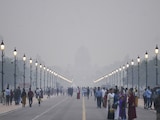Asteroids approaching Earth always make headlines because a collision with one could result in a massive disaster for human life. Recently, the National Aeronautics and Space Administration's Jet Propulsion Laboratory noted that Earth will have some relatively close encounters with asteroids in the coming days. A 250-feet asteroid, which is nearly the size of a building, will pass close to Earth tonight. Asteroid 2024 JB2 is a part of the Apollo group and has an astonishing speed of 63,683 kilometres per hour, NASA's CNEOS data stated. Although asteroids are not unusual, the size and speed of this particular celestial object are concerning.
Despite its enormous size and speed, scientists are not alarmed this time. The safe distance between this asteroid and Earth is guaranteed by NASA to be around 2.75 million miles.
Although the majority of asteroids avoid Earth, a small number fall into a category known as potentially hazardous asteroids. These are large-more than 460 feet and their orbits carry them close to Earth's orbit around the Sun, at 4.6 million miles (7.5 million km).
Notably, NASA's Asteroid Watch dashboard tracks asteroids and comets that will make relatively close approaches to Earth. The dashboard displays the date of closest approach, approximate object diameter, relative size, and distance from Earth for each encounter. It tracks asteroids that are within 7.5 million kilometres of Earth
According to NASA, asteroids are left over from the formation of our solar system. Our solar system began about 4.6 billion years ago when a big cloud of gas and dust collapsed. When this happened, most of the material fell to the centre of the cloud and formed the sun. Some of the condensing dust in the cloud became planets.
Not all asteroids are the same size and shape. Because asteroids are formed in different locations at different distances from the sun, no two asteroids are alike. Asteroids aren't all around like planets and have jagged and irregular shapes. Most asteroids are made of different kinds of rocks, but some have clays or metals, such as nickel and iron.















